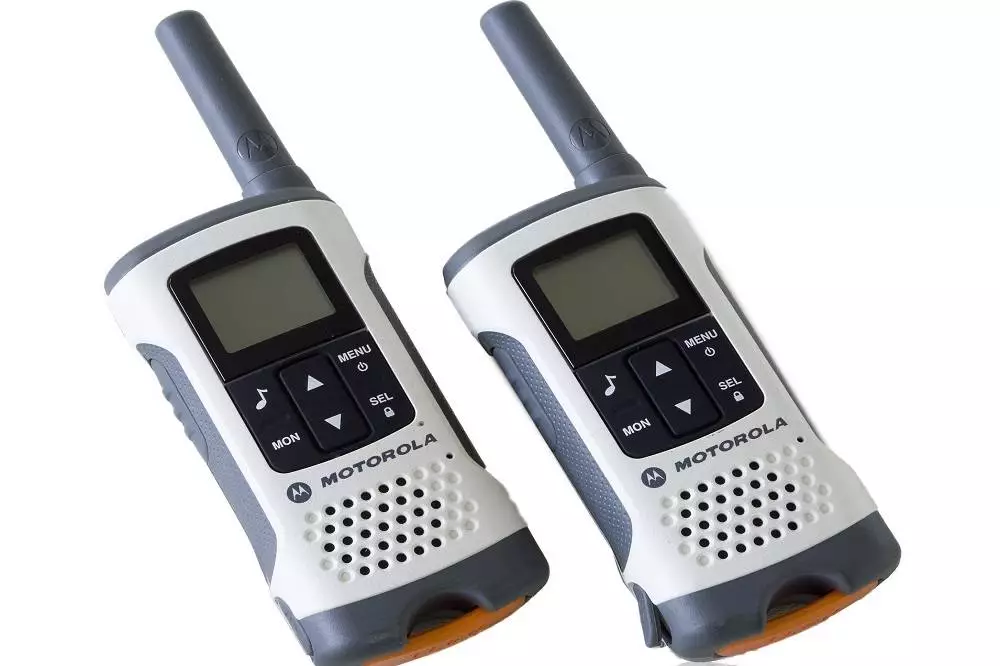Walkie-talkies are handy, easy-to-use devices. Yet, with so many options on the market, it can be hard deciding which model or brand is best for you.
Before knowing what kind of two-way radio to buy, you should get to know a little bit more about them. So, let’s start with the basics.
One common question many people ask is: are walkie-talkies analog or digital? The short answer is that walkie-talkies are available in both mechanisms.
Keep reading to find out more about each type of walkie-talkie. Then, you can decide which one is better for you.
Let’s get started.
Are Walkie-Talkies Analog or Digital?
Walkie-talkies go by several names. Some people refer to them as two-way radios or handheld transceivers (HT). They were first invented in 1937 by the Canadian Donald Hings.
His portable radio signaling system was used to help pilots communicate more effectively. It proved to be especially useful during World Word II.
These hand-held units are still used today because they’re reliable and affordable. However, even though they’re cost-effective, their capabilities are pretty limited.
On the flip side, digital walkie-talkies provide much longer ranges. They’re also more high-tech and offer clearer, sharper signals.
Their downside is that they’re not as budget-friendly as their analog counterparts. Plus, they’re more difficult to manage.
Analog vs Digital Walkie-Talkies
Nowadays, there are two types of walkie-talkies: analog and digital. Each one comes with its set of benefits and drawbacks.
Read ahead to learn more about each type.
Analog Radios
Analog walkie-talkies rely on simple technology that’s both user-friendly and reliable. Let’s take a look at how they operate, as well as a few of their benefits and drawbacks.
How They Operate
Analog radios operate via sinusoidal value waveforms. These signals transmit voice signals in one uninterrupted wave. As a result, it requires basic technological systems to operate efficiently.
The best part is that vocal signals are sent without the risk of digital interruption. When one person talks, their voice is converted into radio waves. The other person’s device picks up on these waves via the antenna on top of the unit.
When one person wishes to talk, they press the push-to-talk (PTT) button. It shuts down the listening mode on their unit and turns on the transmitting mode.
When they’re done speaking, they say “over” and release the PTT button. When this happens, the person on the other end understands that the speaker is done talking.
Advantages
Another advantage of analog radios is that they use a frequency bandwidth or channels. Each of the two users must tune in to the same band.
Analog radios have gone through many transformations over the years. They’re now lighter, more effective, and much more travel-friendly.
They’re also just as reliable and functional as when they first came out. Not to mention, they’re comparatively low cost.
Disadvantages
Here are a couple of drawbacks of using analog walkie-talkies:
- Analog radio systems require transmission-specific transmitters and receivers
- To update an analog radio system, you have to replace the entire fleet of units
- Capable of handling only one conversation per channel, which reduces performance
- Aren’t compatible with digital apps
Digital Radios
Technology has changed so much of how we live, work, and communicate. It’s no wonder that it would also reshape the entire walkie-talkie industry.
This led to the birth of digital radios. While they may have the primary functions of analog walkie-talkies, their inner technologies are more advanced.
How They Operate
Digital radios convert voice signals into a certain type of computer language. When you speak, the radio transforms your voice into a language other digital radios can understand.
This is usually in the form of numeric patterns much like digital broadcasts and recordings. These patterns are then transmitted as sound waves until they get to their destination.
Advantages
The biggest advantage of digital walkie-talkies is that their signals travel farther. These signals provide more direct, clearer sounds.
Plus, there’s a noticeable reduction in background static and noise. This makes communication much more effective.
Another benefit is that they come with a wide array of software apps. This includes useful extras, such as text communication and GPS capabilities.
Most of these radios also come with analog functionality. It’s a feature that offers organizations more flexibility when upgrading their systems.
Disadvantages
We’ve mentioned this before, but the major drawback of digital radios is their steep price. They’re also more difficult to operate and master.
When it comes to practicality, digital signals often don’t cope well with radio frequency signals. This can lead to a rise in background noise or an error in the system.
The Takeaway
So, are walkie-talkies analog or digital? How about both?
Two-way radios started out as exclusively analog. They used one-channel bandwidths and a simple, user-friendly mechanism to operate.
Pretty soon, technology took over and digital radios became all the rage. They’re high-tech and offer many advanced features. Still, they’re relatively more expensive than analog units.
